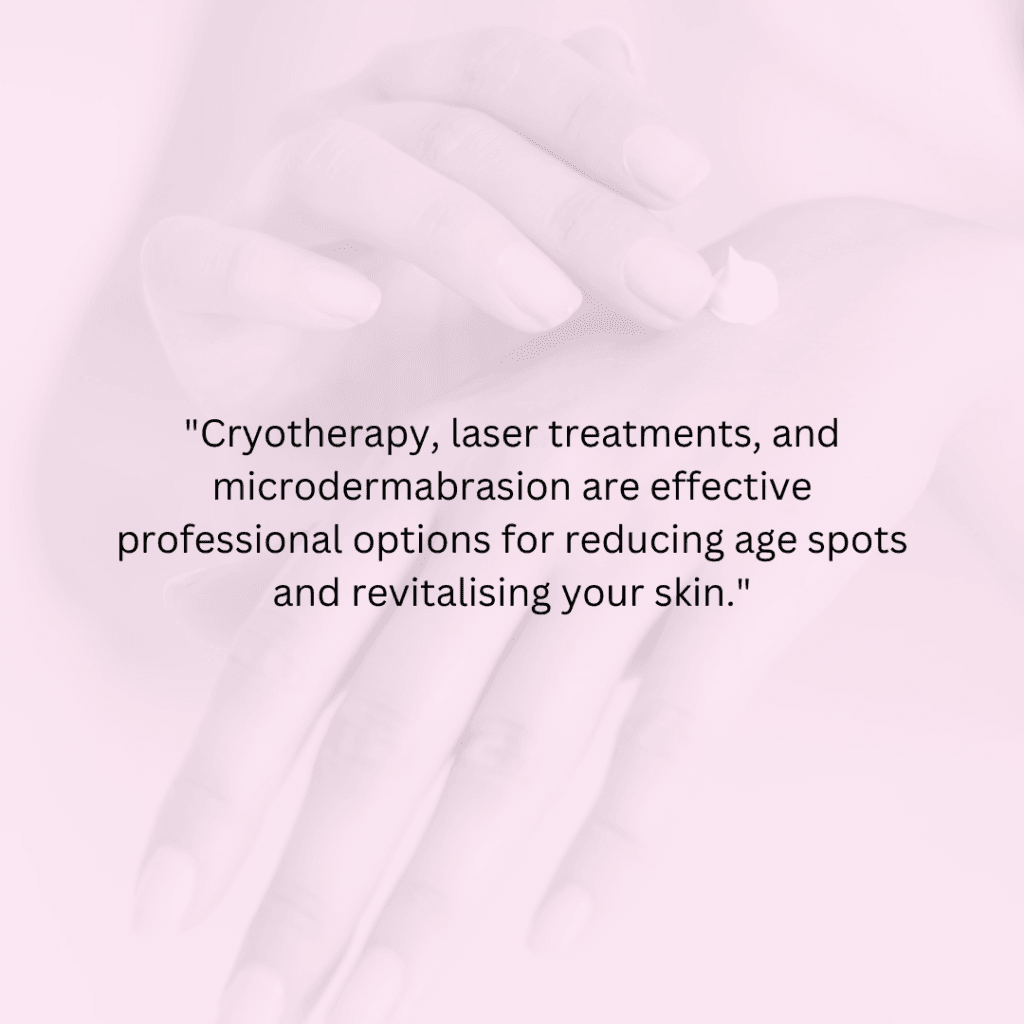*This article contains affiliate links*
Age spots, also known as liver spots or sun spots, are small, flat, dark areas of skin that typically appear on sun-exposed areas such as the face, hands, shoulders, and arms. While they are harmless, many people seek ways to reduce their appearance for cosmetic reasons. This article will explore what age spots are, why they form, and how you can get rid of them.
What Are Age Spots?
Age spots are areas of hyperpigmentation that develop over time due to prolonged sun exposure. The skin produces more melanin (the pigment responsible for skin colour) as a defence mechanism against UV rays. Over time, this excess melanin accumulates in certain areas, leading to the formation of flat, brown, grey, or black spots on the skin.
Although they are most common in people over the age of 50, age spots can appear on younger people, especially those who spend a lot of time outdoors without adequate sun protection.
Causes of Age Spots
The primary cause of age spots is UV exposure from the sun or tanning beds. UV rays accelerate melanin production, which can become unevenly distributed, causing spots. Factors such as genetics and skin type also play a role, with fair-skinned individuals being more prone to developing these spots.
How to Get Rid of Age Spots
While age spots are harmless and don’t require medical treatment, there are various methods to reduce or eliminate them if desired.
- Topical Treatments
- Hydroquinone: This bleaching agent can lighten the appearance of age spots by reducing melanin production. It’s available over the counter or by prescription.
- Retinoids: These vitamin A derivatives can help speed up cell turnover, promoting the shedding of pigmented skin cells.
- Vitamin C: Known for its brightening properties, vitamin C serums can help lighten dark spots over time.
- Chemical Peels: Mild chemical peels containing alpha hydroxy acids (AHAs) can help exfoliate the skin, revealing fresher, less pigmented skin underneath.
- Laser Therapy
- Laser treatments target melanin in the skin, breaking down the pigment so that the body can absorb it naturally. Multiple sessions may be required depending on the depth and size of the spots.
- Cryotherapy
- In this treatment, a dermatologist applies liquid nitrogen to freeze and destroy the pigmented skin cells, which will eventually peel away, revealing unblemished skin.
- Microdermabrasion
- A non-invasive exfoliation technique, microdermabrasion can remove the upper layers of the skin, gradually fading age spots with regular treatments.
- Prevention
- The best way to avoid age spots is to protect your skin from UV exposure. Use broad-spectrum sunscreen with at least SPF 30 daily, even on cloudy days. Wearing protective clothing and avoiding peak sun hours (10 a.m. to 4 p.m.) can also help prevent age spots.
When to See a Doctor
While age spots are harmless, it’s important to distinguish them from other skin conditions like melanoma. See a doctor if you notice:
- Spots that grow rapidly
- Irregularly shaped spots
- Spots that bleed, itch, or change colour
Final Thoughts
Age spots are a common sign of ageing, especially for those with sun-damaged skin. Fortunately, there are many ways to lighten or remove them, from over-the-counter treatments to professional procedures. Prevention is always better than cure, so make sun protection a daily habit to maintain youthful, even-toned skin.




1 comment
I used to worry about brown spots on my skin, now I understand the cause and have more ways to improve it.